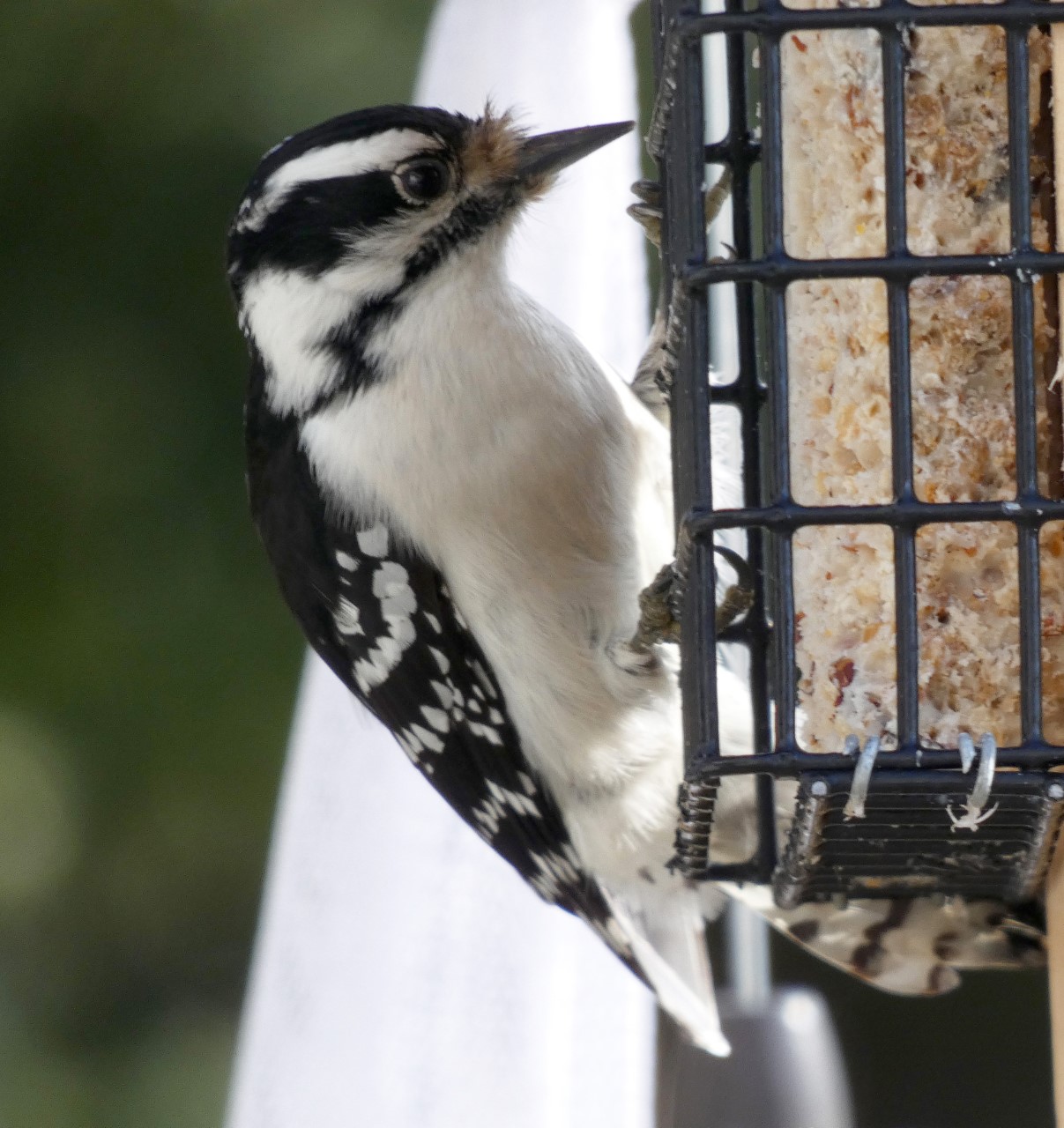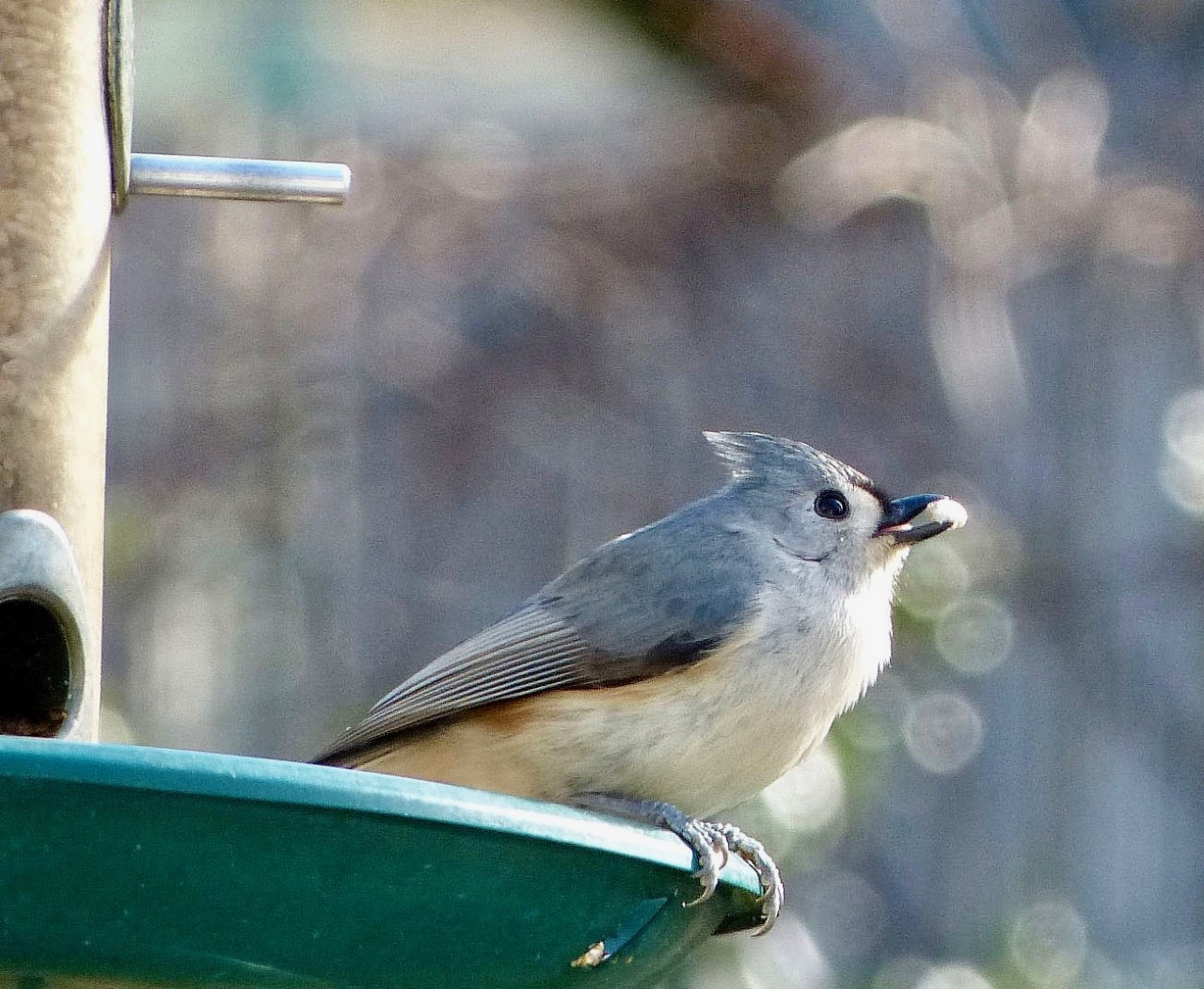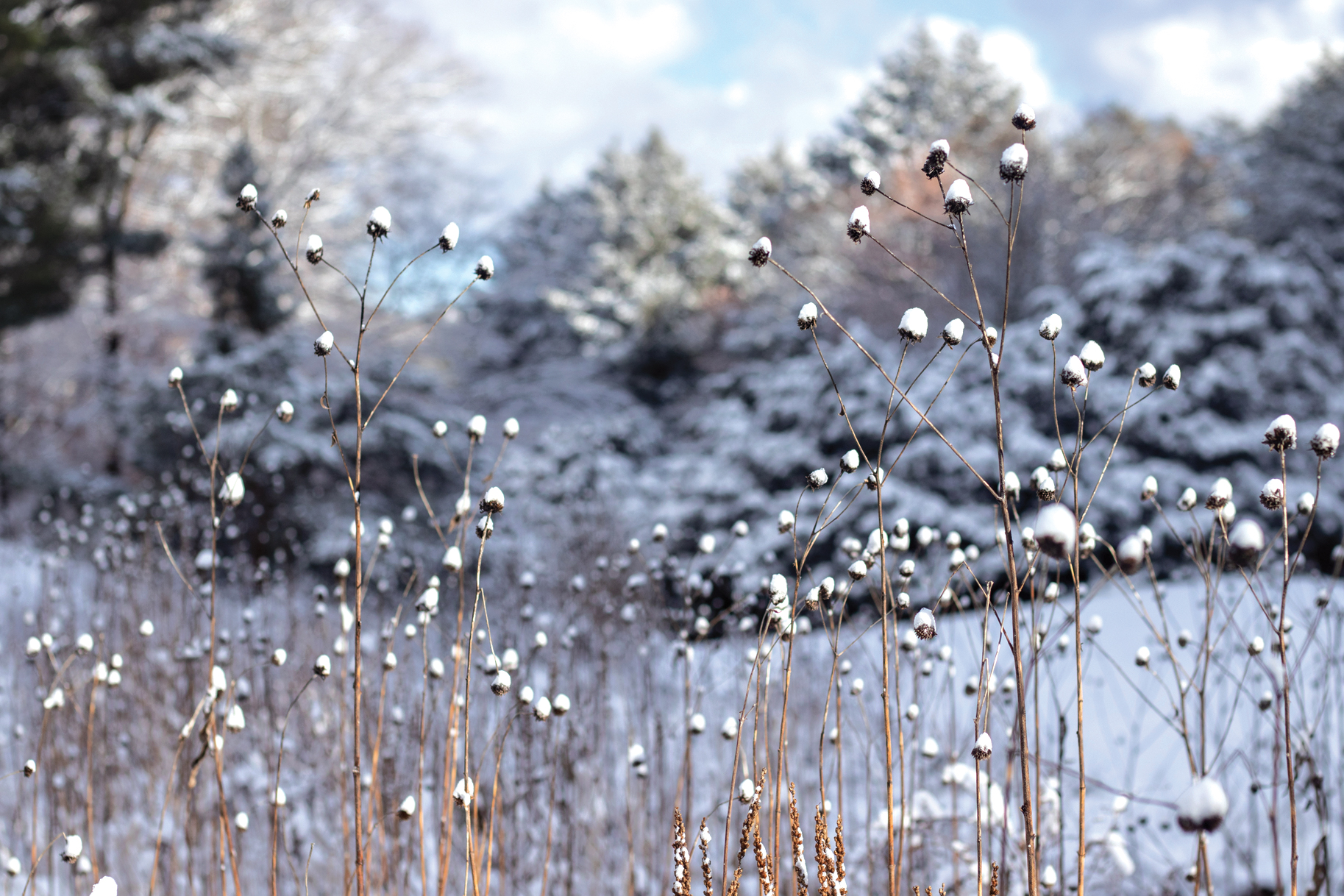
The Arnold Arboretum’s collections provide year round sustenance and habitat for a host of wildlife, including many bird species. Our Public Programs department complements these natural resources by adding winter bird feeders. Visiting birds and birders alike have long enjoyed the presence of a feeding station at the Hunnewell Visitor Center. However, two new stations now feature in the landscape. Look for one atop Bussey Hill and the second along Conifer Path.
Making Connections
While winter bird feeders provide a snack for our avian friends, their primary purpose is actually educational. (Research shows birds survive winter just fine without feeder availability.) Visitors can learn much about our common species through a bit of patient observation. For example, you can watch chickadees and titmice fly back and forth, grabbing one seed at a time. They prefer eating alone on nearby branches, sometimes hiding seed in bark crevices for a later meal. Or look at cardinals perch and puff. Using their size, they try keeping other birds away until they finish. If you have time, go watch for a while. Which species prefer pecking at the suet cakes? What birds scavenge for seed on the ground below?
Our feeders also provide a focal point for documenting unusual birds at the Arboretum, such as fox sparrows, pine warblers, dicksissels, and crossbills. This type of information gathering builds upon a rich history. Staff member C. E. Faxon published the Arboretum’s first bird list in 1895, a list we continue to update through the present day. We invite you to contribute to this data set as a citizen scientist. Record your observations to smartphone apps such as eBird or email our Visitor Center to share interesting sightings.
Of course, bird feeders can also be misused. When placed in densely-built areas, they attract large flocks of house sparrows and European starlings. These invasive species keep other birds off while they rapidly consume the seeds. We discourage this behavior by placing our feeders far inside the Arboretum’s perimeter where these species do not go. Feeders installed close to windows can cause fatal collisions, and scattered bird seed beneath feeders can attract unwanted rodents. In suburban and rural areas, feeders may attract deer and even bears. Wherever the location, all feeders require regular cleaning, which prevents the spread of disease. Finally, be sure and remove the feeders at winter’s end, when food sources become more plentiful.

Enhancing Habitat and More
In addition to feeder stations, the Arboretum also models bird friendly landscaping practices. For example, our diverse collection of woody plants and shrubs supplies year round food, cover and nesting habitat for hundreds of species. We minimize disturbance in our meadow environments during spring, summer, and fall for grassland species. Staff also plant thousands of native flowers and grasses each year, providing sustenance for an abundance of wildlife. In the winter, stems and seed heads provide birds with both valuable habitat and a natural food source.

Of course, you can see this all for yourself by taking a walk at the Arboretum. For birding help, check our website resources or look for interpretative signs in the landscape. You can also join our expert bird guides on a scheduled walk. That way, you will see some of Boston’s greatest bird diversity and learn about our collections at the same time. Guides curate their walks with both birding beginners and experts in mind, with all skill levels welcome. This spring, we’re offering bird walks on April 30, May 7, and May 21.
Paying it Forward for Birds
If you value the Arboretum’s many bird-friendly practices, you can thank the generosity and foresight of Mr. Edward Whitney. In 1913, Mr. Whitney donated $1,000 for the establishment of bird-friendly habitat at the Arnold Arboretum. Over a century later, the Arboretum’s Edward Whitney Bird Fund still finances projects including feeder stations, nest boxes, bird walks, and bird-focused plant purchases. Please help this work continue by becoming an Arboretum member or making a gift in honor of the Arboretum’s 150th Anniversary. As Mr. Whitney’s example shows, our members, visitors, and wildlife will benefit from the fruits of your generosity long into the future.
